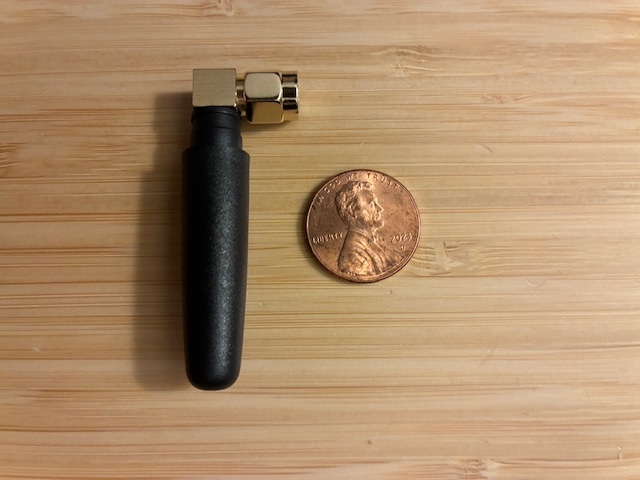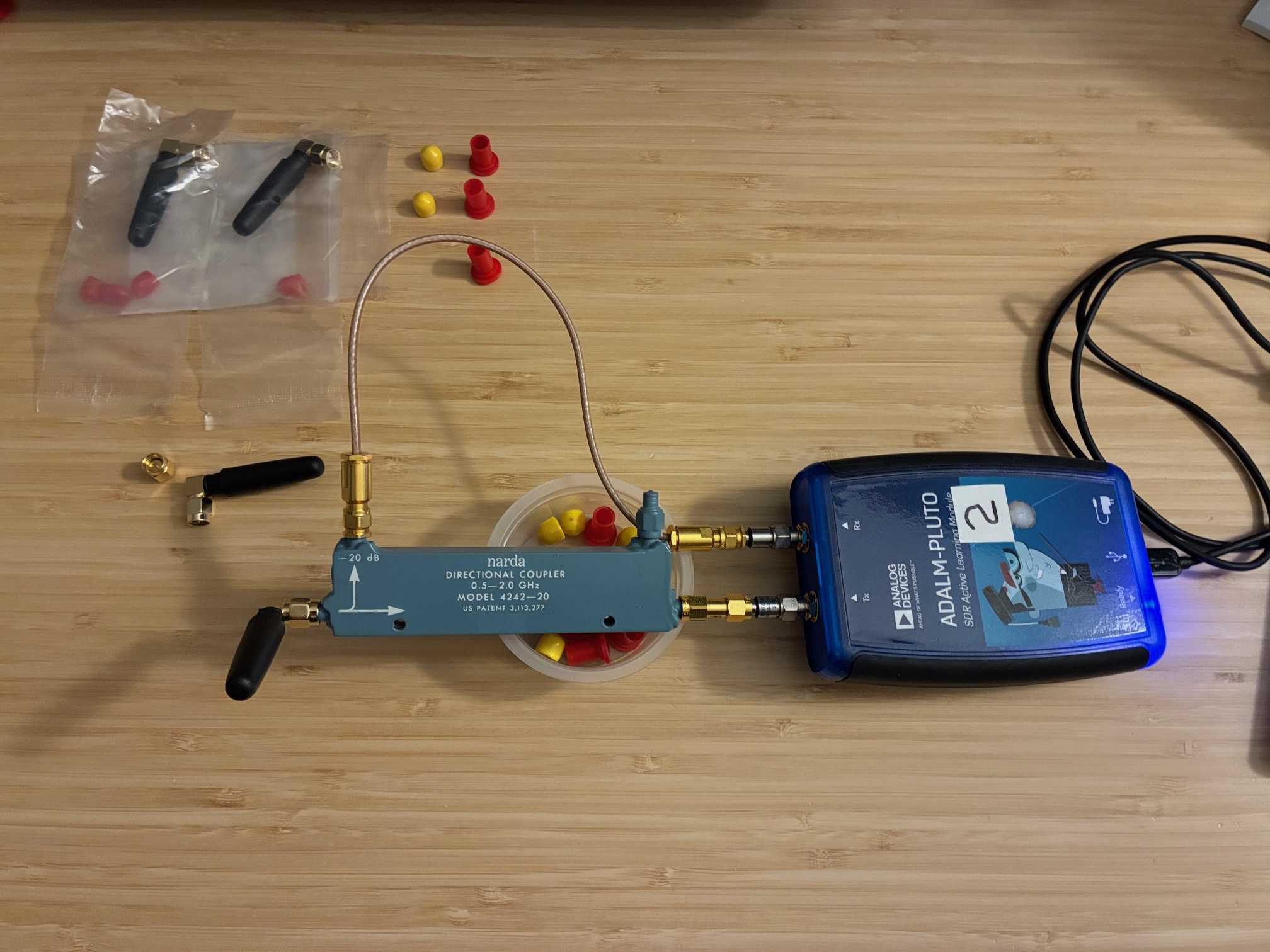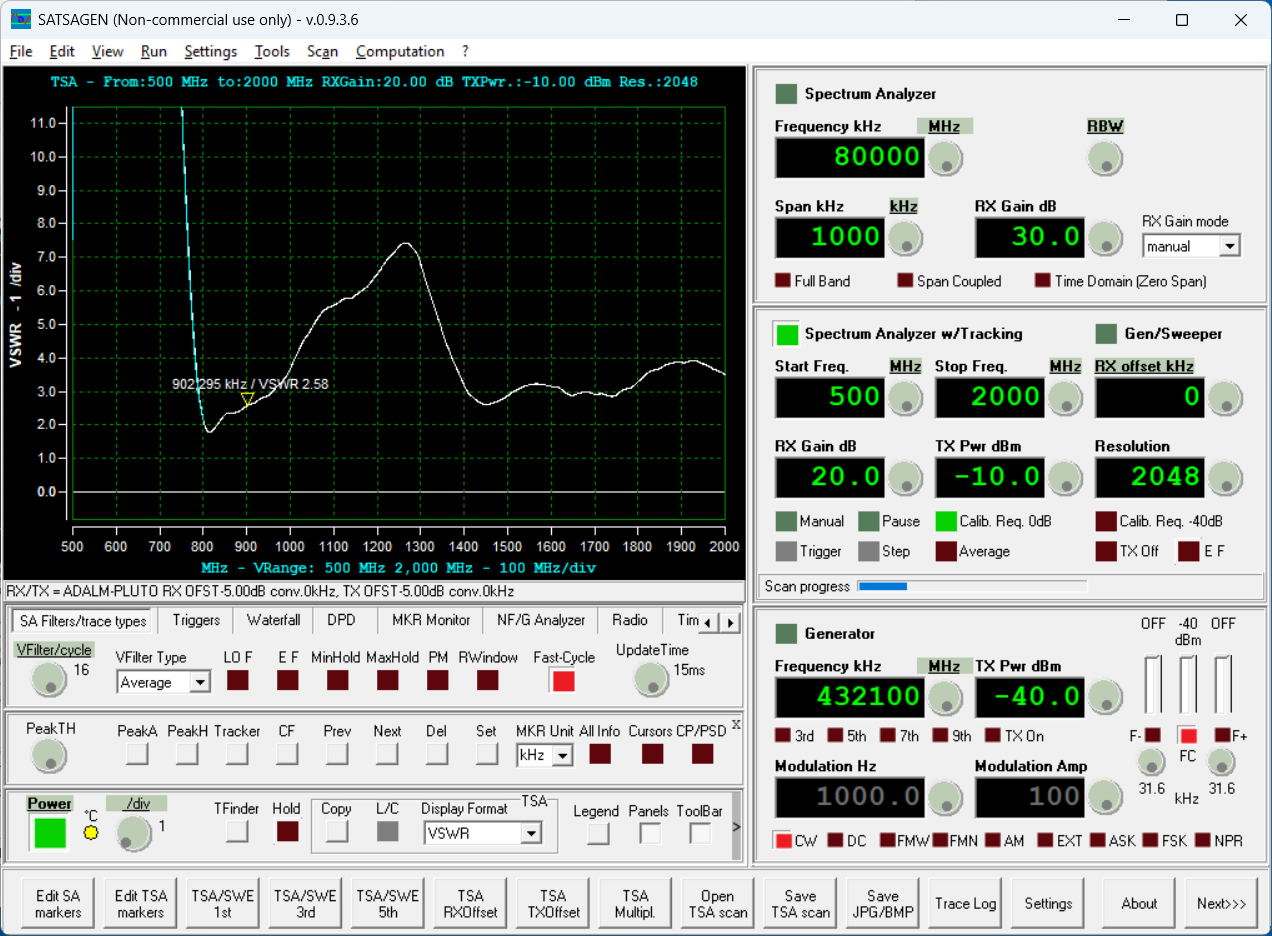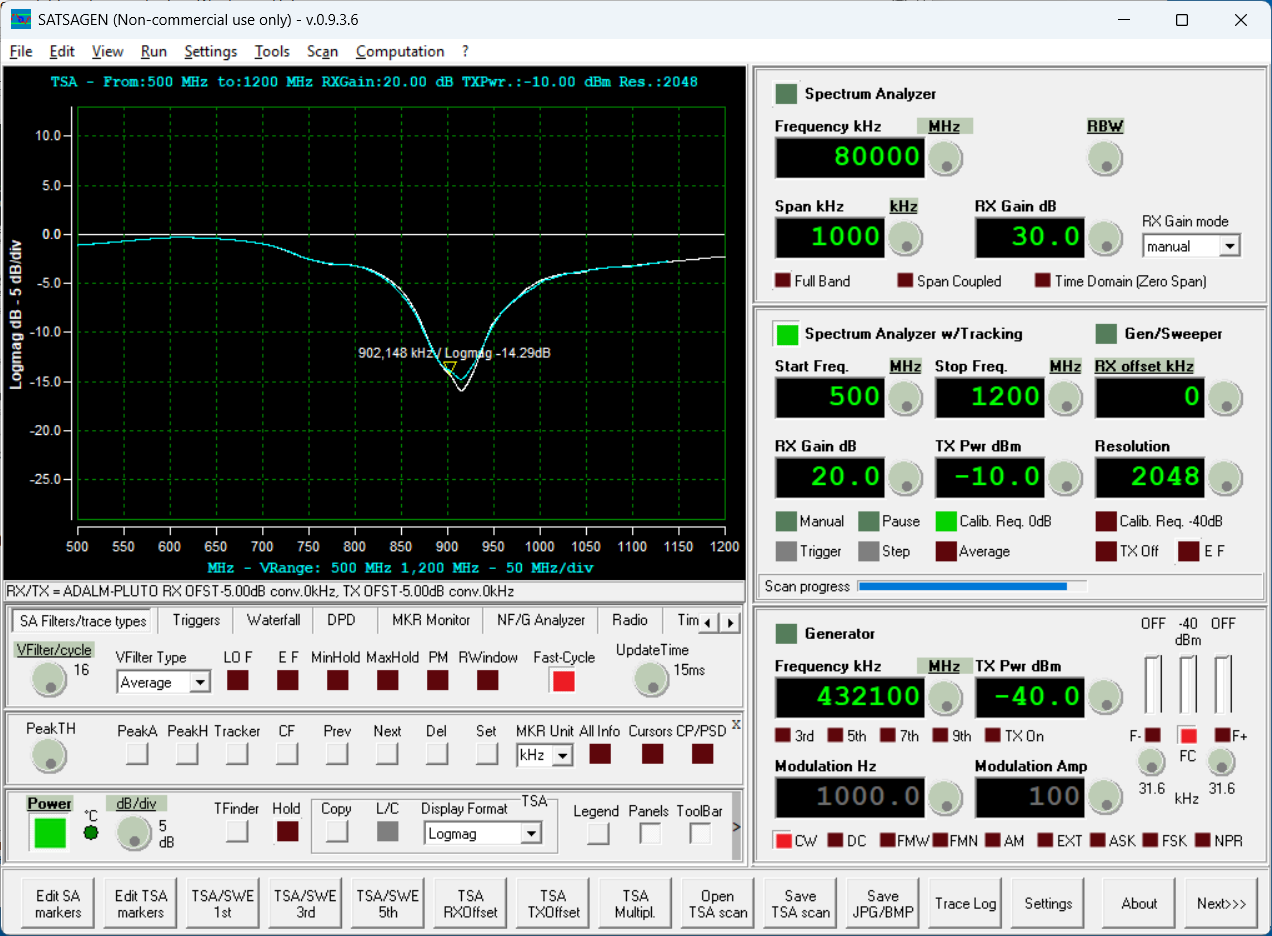Pluto Antennas Test
The ADALM Pluto Software Defined Radio (SDR) units each came with two antennas to attach to the transmit (TX) and receive (RX) SMA ports. These antennas are pretty short (about 1.5") and have a right angle SMA-Male connector on them.

It is unclear what the frequency band (or range) of coverage is as they are not marked in any way. Today's exercise is to measure their return-loss (S11 in dB) and VSWR to see if they might work as bench test antennas for development of the future 902 MHz transceiver.
Test setup is as follows:
- Win11 Ham PC running SATSAGEN software
- Pluto SDR (#2 for today's test)
- SMA-M to SMA-M adapter
- SMA-M to SMA-M RF cable (~12 inch length)
- Narda 4242-20 directional coupler (covering 500-2000 MHz)
- Narda 4772-3 SMA RF Attenuator, 3 dB
- SMA-M RF Short (from NanoVNA calibration kit) < Used for setup calibration only
The plan is to use a directional coupler on the TX output of the Pluto SDR, generating a source signal to the antenna, and then using the coupled port to capture and route reflected signal back to the Pluto RX port. After connecting components per the photo below, and calibrating the SATSAGEN Receive with Tracking Generator with a SMA-M short instead of the Pluto Antenna, a first run was attempted. A small plastic cup was used to elevate the antenna end of the coupler up off of the wooden desk surface.

Using SATSAGEN software controlling the Pluto SDR yields this response curve.

The antenna is found to have a resonance at around 800 MHz, with usable return loss up at 902 MHz (~ 6.7 dB return loss). Below is the VSWR response of the second antenna tested.

This could be a little better if we traded some insertion loss for terminating/de-Q'ng the antenna in the test setup. Let's add a 3 dB attenuator/pad at the antenna connection.

This should broaden the response (helping it to operate over a wider frequency range in our test setup).

Ran out of time and rushed the last few measurements. Not certain if this is a 3 dB or a 5 dB pad in series with the antenna. Know that it was one of the two antennas utilized today. Need to repeat these last tests again (using a small value attenuator with the antenna).
For the future Pluto SDR to Pluto SDR test setup, should have lots of power available operating at a short range (across the desk), so just terminating the transmit power with some radiation should meet the need. These little antennas should fit that bill nicely.
With functioning 902 antennas in hand, next steps are to:
- Add some coax pig tails onto the KK7B PCB filters and measure bandwidth, insertion loss and out of band rejection
- Put together a 902 MHz frequency translating repeater as a test station using Pluto SDR #1, KK7B PCB filters, RF circulator, and RF Limiter on RX path. Will operate without RF amplifiers in the external filtering chain. Thinking about using a 5 MHz split for this test repeater.
- Put together first prototype of 902 MHz transceiver, use passive RF filter chains and common-antenna circulator/limiter front end and "talk to" the 902 repeater. Need to put together the microphone/speaker headset interface for this test (talk and hear own self over full duplex link).
- Add RF amplifiers to both repeater and transceiver chains, operate with tiny 902 antennas and see how far it talks on outside test range.
- Build some directional 902 antennas and evaluate range in the big blue sky ham shack.
More fun ahead (now with higher power and longer range)...
All author photos captured with an iPhone 16e.